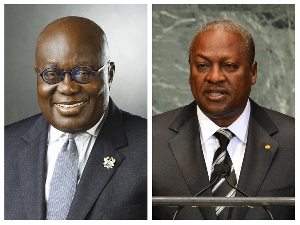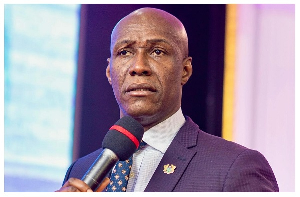 The positive trade surplus in the first quarter of 2019 represents 1.3 percent of the GDP
The positive trade surplus in the first quarter of 2019 represents 1.3 percent of the GDP
The country, in the first three month of 2019, has recorded a positive trade balance surplus of US$899 million, compared with a surplus of US$724 million for the same period 2018, indicating an improvement.
The positive trade surplus in the first quarter of 2019 represents 1.3 percent of the Gross Domestic Product (GDP), compared with 1.1 percent of GDP for the same time in 2018. This confirms that the poor performance of the cedi against the major international trading currencies, particularly the United States dollar was primarily the result of flagging confidence by currency traders, who consequently took up speculative positions against the local currency, because the capital and financial account recorded net inflows as well.
According to Bank of Ghana’s provisional latest Monetary Report for the first quarter of 2019, the outturn is attributable to continued improvements in export receipts, mainly from crude oil.
For the first quarter of 2019, exports of cocoa beans and products amounted to US$749 million down from US$859 million recorded for the same period in 2018. Gold exports were US$1,446 million up by only a marginal one percent against the preceding period in year-on-year terms. Crude oil exports rose to US$1,109 million, compared with US$1,053 million in 2018.
Other exports, including non-traditional exports, equally rose to US$736 million in the first quarter of 2019, compared with US$716 million in the same period of 2018.
However, total merchandise imports for the period January to March amounted to US$3,140 million, indicating a decline of 5.8 percent against the corresponding period of 2018. Of the total imports, non-oil imports inched up by 0.7 percent to US$2,694 while oil and gas imports fell by 32.5 percent to US$446 million, compared with US$660 million recorded in 2018.
The report further points out that the trade surplus, together with developments in the services, income and transfer accounts, resulted in a provisional current account surplus of US$194 million, representing 0.3 percent of GDP for the first three months of 2019. In the same period of 2018, the current account surplus was at US$223 million, also 0.3 percent of GDP.
The capital and financial account further recorded a significant net inflow to the tune of US$3,068 million for the first three months of 2019, compared to US$529 million net outflows for the same period in 2018.
This outcome has largely been attributed to higher net portfolio investment inflows, mainly as a result of proceeds of the successful Eurobond issue, as well as higher net inflows in foreign direct investment and a lower outflow of other investments, which are mainly medium- and long-term capital.
As a result, the overall balance of payments (BoP) was provisionally estimated at a surplus of US$3,135 million, equivalent to 4.6 percent of GDP, for the first three months of 2019, compared to a deficit of US$672 million, or 1.0 percent of GDP in the same period of 2018.
This has resulted in a US$2,875 million buildup in Gross International Reserves (GIR) to US$9,900 million, amounting to 5.0 months of import cover as at the end of March 2019, from the end-December 2018 stock position of US$7,025, representing 3.6 months of import cover.












